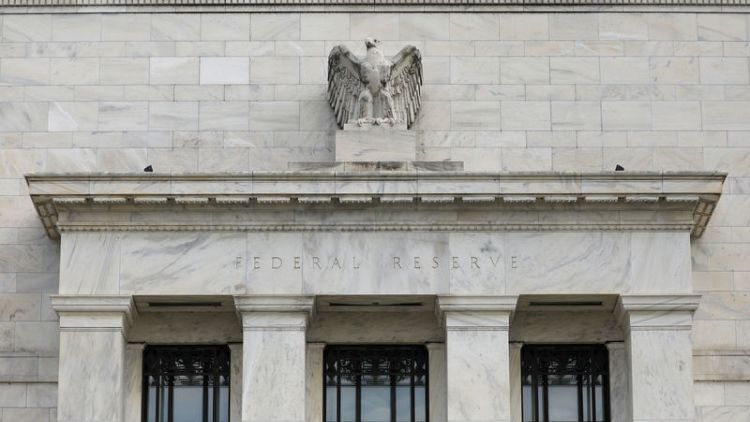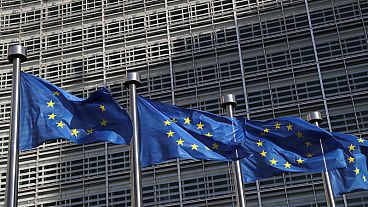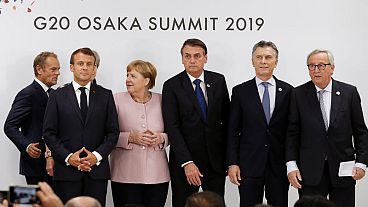By Howard Schneider and Ann Saphir
WASHINGTON (Reuters) - The U.S. Federal Reserve's hesitance to react to world trade tensions may have been dealt a fatal blow Friday by President Donald Trump's surprise announcement of new tariffs on Mexico, levies that could slam investment and business confidence and leave little doubt the administration's combative stance is here to stay.
The reaction won't be immediate, with few analysts expecting the Fed to cut rates when it next meets on June 18-19.
But a wide berth of forecasters, economists and investors said Friday that the prospect of steadily escalating tariffs, slapped without warning across one of the world's most integrated supply chains, has substantially increased risks to the economy and increased the likelihood the Fed will have to respond.
"The damage to business confidence could be lasting," and prompt the Fed to cut interest rates at both its September and December meetings, wrote JP Morgan economist Michael Feroli in a report headlined "Making Abysmal Growth Attainable," a swipe at Trump's signature Make America Great Again campaign slogan.
"Ground zero will be business capital spending," with economic data likely to begin turning sour mid-summer, he said.
Financial markets are now pricing in two quarter percentage point Fed rate cuts before the end of the year. Analysts at Barclays went a step further, anticipating the Fed will cut rates a total of 0.75 percentage point by year's end.
Stocks on Friday continued a month long slide, and falling bond yields showed investors sceptical about what's to come. Forecasts for economic growth have ebbed well below 2% for the second quarter, compared to about 3% last year and in the first months of 2019.
Risks to the Fed outlook are now "completely skewed to the downside," with shaky financial markets and waning confidence possible precursors to a slowdown that would prompt the Fed to react, said Cornerstone Macro analyst Roberto Perli.
Distinct from talk that the Fed might cut rates to help nudge along a decade-old recovery and raise weak inflation, Perli said the Fed may soon face a more conventional rescue mission, cutting rates in the face of an earnest slowdown.
The impact "is hard to judge...but it would be naive to think there won't be an effect and that only Mexico has something to lose from all this," he said.
FALLOUT FOR FED
For the Fed the fallout may not be all bad. In recent remarks Fed Governor Lael Brainard said that if trade policies lead to an "opportunistic" jump in prices, it could bring the central bank closer to or above its 2% inflation goal, and allow the Fed to send a signal it would tolerate that faster pace of price increases.
But the whipsaw policy environment under Trump has been difficult for the Fed to read. Last year's tax cuts and increased government deficits sparked stronger-than-expected growth and, for a while, a more aggressive pace of Fed rate increases.
With the Fed's target interest rate still at a relatively low level of between 2.25% and 2.5%, the central bank may now have to devote its rate cut "ammunition" to battling the impact of the trade war.
Officials have been reluctant to commit.
Even the recent collapse of trade talks with China, and the imposition of higher tariffs on an array of Chinese imports, caused little immediate reaction from Fed officials who noted that employment, household spending and other economic data pointed to continued steady growth.
That continued to be the case Friday, with April inflation data a bit stronger, and consumer expectations of future inflation on the rise, both positive signs for policymakers worried about a downward drift in price increases.
But the Fed's upcoming June meeting will be a first test of how the intensified trade war is influencing opinions at a central bank whose officials were already primed for the economy to slow this year. Policymakers will release new economic forecasts and update their views on the appropriate level of interest rates for coming months, an early tell of possible support for a rate cut.
Along with the blow to confidence and financial markets, there are reasons the Mexico tariffs may move the Fed more than Trump's other trade actions to date.
It was an impromptu move, driven by a political dispute over immigration rather than by some economic logic, a fact that may leave Fed officials even less certain about what to expect next.
In addition, more than 70% of U.S. imports from Mexico are so-called intermediate goods, meaning higher input prices for U.S. manufacturers trying to sell their final products at home or in export markets abroad.
Unlike trade with China, goods in the U.S.-Mexico supply chain "tend to cross the border multiple times," Oxford Economics analyst Gregory Daco noted. "The massive supply chain disruptions, significantly tighter financial conditions and depressed private sector confidence would amplify the direct tariff shock and increase the odds of a U.S. downturn."
(Reporting by Howard Schneider and Ann Saphir; Editing by Andrea Ricci)



